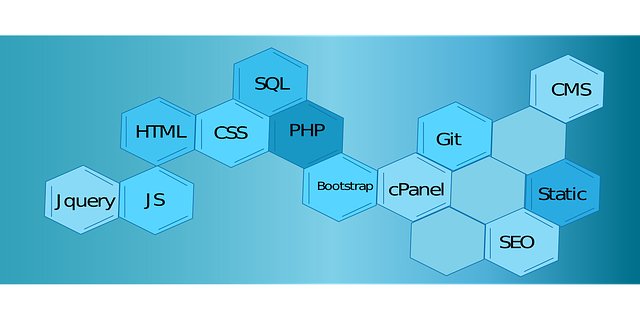Is Low Code/No Code Dead? Why AI Might Be the More User-Friendly Future

In the fast-evolving world of software development, buzzwords come and go. One of the most talked-about trends over the past few years has been Low Code/No Code platforms—tools designed to enable rapid development with minimal programming. However, as artificial intelligence continues to surge forward, many are beginning to ask: Is Low Code/No Code dead? And is AI becoming the more user-friendly solution for both developers and businesses?
In this article, we explore the current state of Low Code/No Code platforms, examine their strengths and limitations, and compare them to the rapidly advancing field of AI-driven development tools. We’ll also look at how these emerging AI solutions are reshaping the development landscape, offering more intuitive, flexible, and powerful user experiences. Ultimately, we aim to provide a clear perspective on whether AI is set to replace traditional Low Code/No Code platforms and what this means for the future of software development.
1. Introduction
Software development has historically required deep technical expertise. However, the rise of Low Code/No Code platforms promised to democratize this process, allowing non-technical users to create applications quickly and efficiently. For many years, these platforms were heralded as a revolution in the development space. Yet, as AI technology—especially advanced natural language processing (NLP) and machine learning—has matured, a new question has emerged: Are Low Code/No Code platforms becoming obsolete in favor of AI-driven development tools?
This article examines whether Low Code/No Code is dead and if AI offers a more user-friendly alternative. We’ll compare the two approaches from multiple perspectives, including ease of use, flexibility, scalability, and cost. By the end of this discussion, you’ll have a better understanding of how these tools stack up and what the future may hold for software development.
2. The State of Low Code/No Code Platforms
2.1 Definition and Overview
Low Code/No Code platforms are development environments that allow users to build applications through graphical user interfaces and configuration rather than traditional hand-coded programming. These platforms target business users, often referred to as “citizen developers,” who may not have formal programming training.
2.2 Successes and Advantages
Over the past several years, Low Code/No Code platforms have enjoyed notable success:
- Rapid Development: They allow for the quick creation of prototypes and full-scale applications, reducing time-to-market significantly.
- Cost Efficiency: By lowering the barrier to entry for development, companies can save on hiring specialized developers and reduce overall project costs.
- Accessibility: These platforms empower non-technical staff to participate in the development process, promoting innovation from within various departments.
2.3 Limitations and Criticisms
Despite these advantages, several limitations have become increasingly apparent:
- Flexibility Issues: Low Code/No Code platforms are often constrained by predefined templates and modules, which can limit customization and complex application logic.
- Performance Bottlenecks: Applications built on these platforms may suffer from performance issues, especially as they scale.
- Scalability Concerns: As businesses grow, the initial rapid development phase may give way to the need for more robust, tailor-made solutions, and transitioning away from a Low Code/No Code platform can be challenging.
- Dependency on Vendors: Many organizations become heavily dependent on the vendor’s ecosystem, which can pose risks if the platform is discontinued or if the vendor fails to innovate.
3. The Rise of AI in Development: A New Paradigm
3.1 Advances in AI and Natural Language Processing
Recent advancements in AI, particularly in natural language processing, have introduced powerful new tools that can assist in software development. AI-driven systems now have the ability to:
- Generate Code: Tools like GitHub Copilot and ChatGPT can generate code snippets based on natural language descriptions.
- Automate Debugging: AI can help identify and fix errors faster than manual processes.
- Understand Context: Advanced NLP allows AI to understand project requirements and suggest solutions that align with business needs.
3.2 Enhanced User Experience
AI-driven development tools are increasingly user-friendly:
- Intuitive Interaction: Users can describe their needs in plain language, and AI systems can translate these requirements into functional code.
- Personalization: AI can adapt to the user’s coding style and project context, offering more customized assistance.
- Learning and Adaptation: Machine learning models continuously improve over time, leading to more accurate and efficient code generation as they are exposed to more data and user interactions.
3.3 Benefits Over Traditional Low Code/No Code
When compared to traditional Low Code/No Code platforms, AI-driven tools offer several distinct advantages:
- Greater Flexibility: AI can generate custom code that is not limited to pre-built modules, allowing for the creation of more complex and tailored applications.
- Scalability: As projects grow in complexity, AI can scale its assistance to meet the evolving needs of the application.
- Reduced Vendor Lock-In: With AI-driven tools, organizations can integrate with multiple platforms and technologies, reducing dependency on a single vendor ecosystem.
- Cost-Effectiveness: While initial investments in AI technology might be high, the potential for long-term savings in development time and improved performance makes it an attractive option.
4. Comparing Low Code/No Code and AI-Driven Tools
4.1 Ease of Use
Low Code/No Code platforms are designed to be accessible, but they often require users to adapt to a limited set of functions and templates. In contrast, AI-driven tools allow users to interact in natural language, making the development process more intuitive and less constrained by rigid frameworks.
4.2 Flexibility and Customization
While Low Code/No Code tools are excellent for rapid prototyping and simple applications, they may fall short when complex logic or custom functionality is required. AI-driven development, on the other hand, can generate highly customized code tailored to specific project needs, offering a level of flexibility that traditional platforms cannot match.
4.3 Performance and Scalability
As applications scale, performance issues can become a bottleneck in Low Code/No Code environments. AI-generated solutions, being built from scratch according to the specific needs of the project, tend to be more robust and scalable. Furthermore, AI can continuously optimize and refactor code, ensuring long-term maintainability and efficiency.
4.4 Cost Considerations
Both approaches have their cost implications. Low Code/No Code platforms often have lower upfront costs and quicker deployment times, making them ideal for small to mid-sized projects. However, as the complexity and scale of the project increase, the limitations of these platforms may lead to higher long-term costs due to the need for eventual re-development. AI-driven tools, though potentially more expensive initially, offer greater savings in development time and can provide higher quality, scalable solutions that justify the investment.
5. Future Market Trends and Predictions
5.1 Shifting Demand in the Enterprise
The enterprise market is increasingly demanding tools that combine speed, flexibility, and scalability. With digital transformation accelerating, companies are looking for solutions that not only enable rapid development but also support ongoing innovation. AI-driven tools are well-positioned to meet this demand, with forecasts predicting significant market growth in AI-based development technologies over the next decade.
5.2 Integration and Hybrid Models
The future of software development may not involve a complete replacement of Low Code/No Code platforms but rather an integration with AI-driven systems. Hybrid models that leverage the strengths of both approaches are emerging:
- Rapid Prototyping: Low Code/No Code remains useful for initial prototyping and testing.
- AI Customization: As projects evolve, AI-driven code generation can enhance and extend these prototypes into fully scalable solutions.
- Seamless Transition: Businesses can gradually transition from low-code environments to more robust, AI-enhanced development platforms as their needs evolve.
5.3 Global Adoption and Competitive Advantage
As more companies embrace AI-driven development, early adopters may gain a significant competitive advantage. Organizations that can effectively harness the power of AI to produce high-quality, scalable software will be better positioned to respond to market demands and drive innovation. This shift is likely to be most pronounced in industries where rapid innovation is critical, such as technology, finance, and healthcare.
6. Conclusion
The debate over whether Low Code/No Code is dead is complex. While these platforms have played a crucial role in democratizing software development and accelerating time-to-market, their limitations in flexibility, scalability, and long-term cost efficiency are becoming increasingly apparent. In contrast, AI-driven tools offer a more dynamic, user-friendly, and customizable approach to development.
AI technologies, with their ability to understand natural language, generate custom code, and continuously learn and adapt, represent the future of software development. For enterprises, the integration of AI-driven solutions promises not only enhanced productivity but also a competitive edge in an ever-evolving market. Hybrid models that blend the rapid prototyping capabilities of Low Code/No Code with the robust, scalable nature of AI-generated solutions may well define the next era of development.
In conclusion, while Low Code/No Code platforms are not entirely dead—they still offer value for simple projects—the rise of AI-driven development is reshaping the landscape. For businesses seeking to remain competitive and agile, investing in AI-driven tools is not merely an option but a strategic imperative. The future of software development lies in harnessing the power of AI to deliver personalized, scalable, and efficient solutions that meet the diverse needs of the modern enterprise.
By embracing AI-driven development and integrating it with existing low-code tools, businesses can create a powerful, hybrid environment that leverages the best of both worlds, ensuring rapid innovation, long-term scalability, and a user-friendly experience for all.


